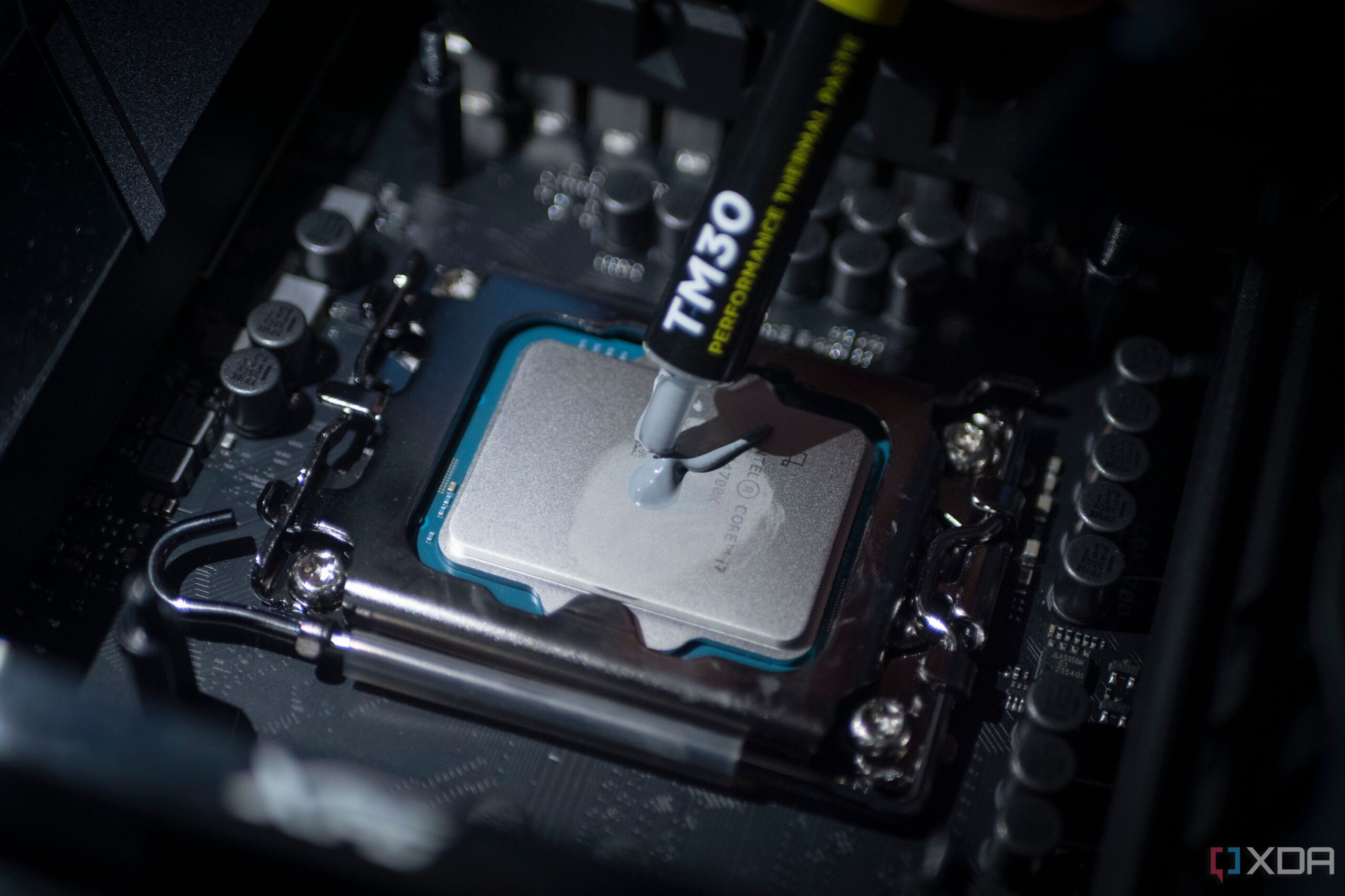Top Stories
Debunking 4 Myths About CPU Thermal Paste Hurting Your PC NOW

URGENT UPDATE: New insights reveal that outdated myths surrounding CPU thermal paste are damaging PC performance as of 2025. While many PC enthusiasts remain divided on this topic, it’s clear that misinformation is costing users optimal thermal management.
Recent findings confirm that the type and application of thermal paste significantly affect CPU temperatures. For users pushing their systems to the limit—whether through gaming, overclocking, or demanding workloads—the choice of thermal paste can be critical. Experts emphasize that not all thermal pastes are created equal. Differences in thermal conductivity and longevity can lead to substantial variations in performance.
One of the most prevalent myths is that stock thermal paste suffices for all users. This is FALSE. While stock paste may be acceptable for casual tasks, those seeking maximum performance must consider upgrading to aftermarket options like Arctic MX-6. Doing so can reduce maximum CPU temperatures and enhance overall system stability, especially under heavy loads.
Another common misconception is that there’s no need to manually spread thermal paste. Many users still rely on the cooler’s heatsink to distribute the paste, believing this method is sufficient. However, experts now advise that manual spreading is essential for newer Intel and AMD processors. Relying solely on pressure can lead to uneven coverage, air pockets, and ultimately, inefficient heat transfer.
The myth that “more paste means better performance” is equally damaging. Applying too much thermal paste can create a barrier that insulates heat, leading to higher CPU temperatures and thermal throttling. Users are encouraged to apply a medium layer—just enough to fill microscopic gaps—ensuring optimal contact between the cooler and the CPU.
Lastly, the idea that thermal paste doesn’t need to be replaced frequently is misleading. While it may last a long time, especially on graphics cards, CPU thermal paste should be checked and potentially replaced every three years. Signs of dried-out paste include rising temperatures and louder fan noises. Regular maintenance ensures a cooler, quieter system, enabling users to enjoy peak performance.
As technology evolves, so does the understanding of thermal management. For users seeking reliable performance, it’s critical to stay informed about these myths. Experts recommend considering alternatives like carbon-based thermal pads or liquid metal, which offer high conductivity but may come with their own complexities.
Make sure to share this vital information with fellow PC builders and enthusiasts. The performance of your system may depend on it!
-

 Science4 weeks ago
Science4 weeks agoInventor Achieves Breakthrough with 2 Billion FPS Laser Video
-

 Health1 month ago
Health1 month agoCommunity Unites for 7th Annual Into the Light Walk for Mental Health
-

 Top Stories1 month ago
Top Stories1 month agoCharlie Sheen’s New Romance: ‘Glowing’ with Younger Partner
-

 Entertainment1 month ago
Entertainment1 month agoDua Lipa Aces GCSE Spanish, Sparks Super Bowl Buzz with Fans
-

 Entertainment1 month ago
Entertainment1 month agoMother Fights to Reunite with Children After Kidnapping in New Drama
-

 Business1 month ago
Business1 month agoTyler Technologies Set to Reveal Q3 Earnings on October 22
-

 World1 month ago
World1 month agoR&B Icon D’Angelo Dies at 51, Leaving Lasting Legacy
-

 Health1 month ago
Health1 month agoCurium Group, PeptiDream, and PDRadiopharma Launch Key Cancer Trial
-

 Entertainment1 month ago
Entertainment1 month agoRed Sox’s Bregman to Become Free Agent; Tigers Commit to Skubal
-

 Health1 month ago
Health1 month agoNorth Carolina’s Biotech Boom: Billions in New Investments
-

 Science1 month ago
Science1 month agoNorth Carolina’s Biotech Boom: Billions Invested in Manufacturing
-

 Top Stories1 month ago
Top Stories1 month agoFormer Mozilla CMO Launches AI-Driven Cannabis Cocktail Brand Fast









